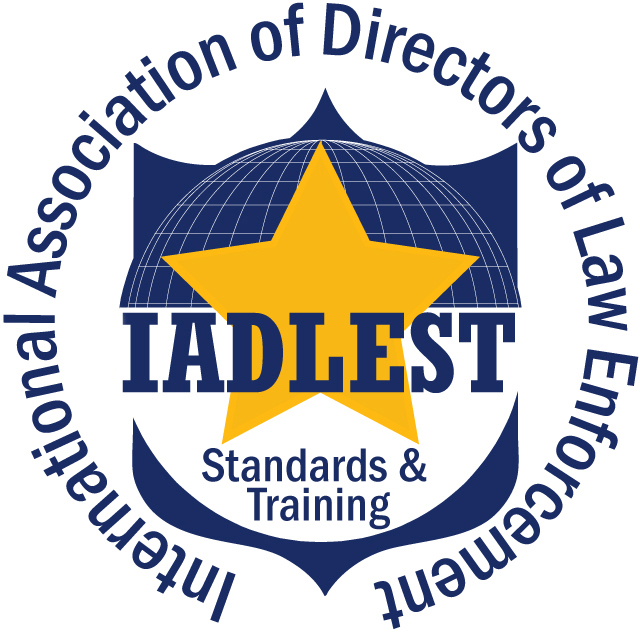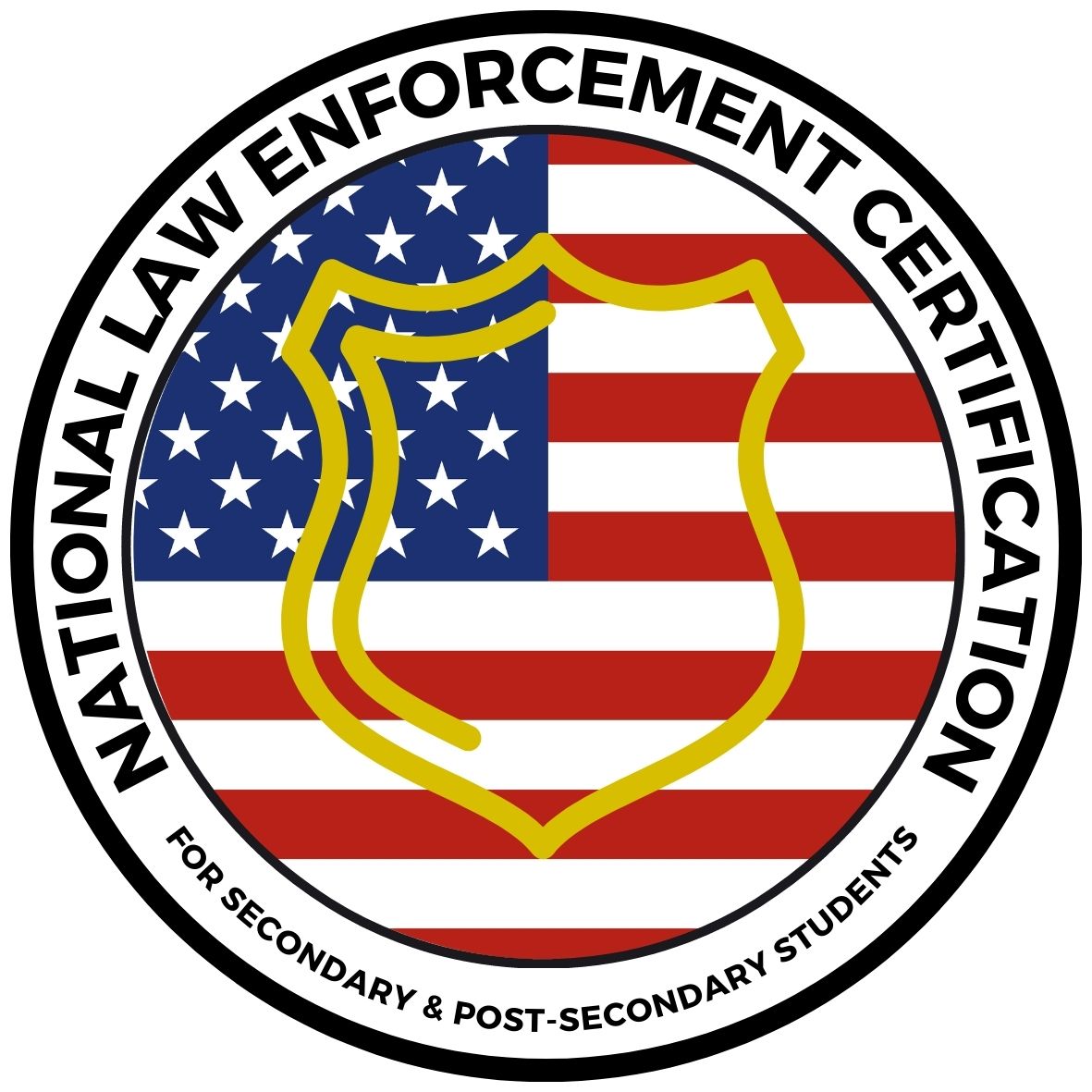National Law Enforcement Certification
for Secondary & Post-Secondary Students
An Industry Recognized Credential

Industry Endorsement – International Association of Law Enforcement Standards and Training (IADLEST)
Your state POST is a member of IADLEST. IADLEST coordinates trainings, standards, policies and research between all the state POSTs. LAPSEN is thrilled to have the preeminent law enforcement training organization endorse our certification. Not only does that mean our certification is clearly a nationally recognized industry certification, it also means students holding such have a huge leg up in their career plans.
To learn more about IADLEST – Click Here
To see a list of state POST members – Click Here
To see the IADLEST endorsement – Click Here

National Law Enforcement Certification
YouScience is excited to partner with LAPSEN in creating the first LAPSEN Law Enforcement Capstone Certification. We have been working together with Subject Matter Experts from around the country to create a certification that is relevant and valuable to your students and the industry.
YouScience has been in the high school certification industry for over 10 years. Enabling students to demonstrate their skills and knowledge – and graduate with valuable certifications as key signifiers of qualified talent. The certification is a direct representation of the competencies that were created by LAPSEN Subject Matter Experts, with extensive experience in the field of Law Enforcement, Criminal Justice, and teaching these subjects in schools.
This credential aligns with the LAPSEN Law Enforcement course standards and supporting lesson plans, curricula and resources.
Cost: $18 LAPSEN Members, $22 Non-LAPSEN Members
Cut Score – 70
Order Student Certification Exams – Click Here
Support Materials
Unlike anyone in CTE, LAPSEN provides the most materials and resources for instructors to prepare their students for 1) entry level career success and 2) industry recognized credential attempts.
Standards
Review the National Course Standards for Law Enforcement from LAPSEN.
Lesson Plans
Supporting lessons for this credential are available to LAPSEN members.
Review
Terms and Concepts to review for the NLEC. Review activities should be in each unit.
Instructor Training
There is no required certification for teachers preparing students for this credential.
There is no required train the trainer for teachers for this credential.
Regular training keeping instructors updated in the field is highly encouraged. To see upcoming training for topics covered in this credential – Click Here
National Law Enforcement Certification Capstone Competencies
This is an outline of the test design. Instructors can use this to crosswalk their instruction to ensure they are covering the necessary content. This is also useful to have students create a review for the certification as they progress through the course content.
Click on the “tabs” to review each section.
- History, Crime Awareness & Causes of Crime
- Law, Criminal Justice & Trial Proceedings
- Corrections & Juvenile
- Arrest and Ethics
- Traffic
- Crime Scene Investigation
- Patrol Tactics & Investigative Work
- Career Planning
STUDENTS WILL BE ABLE TO UNDERSTAND LAW ENFORCEMENT HISTORY, CRIME AWARENESS, AND CAUSES OF CRIME
Objective 1 A brief history of law enforcement.
- Texas Rangers
- Sir Robert Peel & Principles of Policing
- The evidence-based policing era: Kansas City; Knapp Commission
- Policing after 9/11: Terrorism, Intelligence led policing, Patriot Act
Objective 2 Peace officer authority in the United States
Objective 3 Bill of Rights and the rights for citizens and police
- Origins of criminal laws: Common law, Model Criminal Code, Case Law
- History of the Bill of Rights
- Reasons for the Bill of Rights
- The Bill of Rights
- Analyze the Bill of Rights and its application
- Define how the Bill of Rights impacts the criminal justice system.
- Identify the application of the 1st, 4th, 5th, 6th, 8th and 14th amendments found in the Bill of Rights
- Identify Rights for citizens and police
Objective 4 Uniform Crime Reports (UCR)
- How crimes are reported
- Clearance rates
- National Incident-based reporting systems (NIBRS)
- Why all crime is not reported
- NCVS
Objective 5 Causes of crime
- Psychological explanations
- Sociological explanations
- Integration of theories
- Criminological Theory
- Biological theory
- Mental illness and crime.
STUDENTS WILL BE ABLE TO UNDERSTAND THE LAW, CRIMINAL JUSTICE SYSTEM, AND TRIAL PROCEEDINGS
Objective 1 General provisions
1. Principles of criminal responsibilities and procedures for prosecuting violations of law
- Procedures and due Process
- Standard of Proof
- Appeal process
- Classification of criminal offenses
- Understand the structure and application of criminal laws, ordinances, and regulations.
- Criminal Code
- Vehicle Code
- Juvenile Court Act
- Local laws and ordinances
- Distinguish between the types and sources of law.
- Common Law
- Statutory Law
- Case Law
- Administrative Law
- Landmark Case Decisions
- Mapp v. Ohio
- Weeks v. US
- Terry v. Ohio
- Miranda v. Arizona
- Tennessee v. Garner
- Graham v. Connor
- Chimel v. California
- Elements of the Offense
- Jurisdiction and Venue
- Classifications of Crimes
- Federal Offenses
- State Offenses
- Felonies
- Misdemeanors
- Petty Offenses/Ordinance Violation
- Crime against persons
- Crimes against property
- Crimes against the administration of government
- Crimes against public order and decency
- Offenses against public health, safety, welfare, and morals
- Controlled substances
- Local laws and ordinances
Objective 2 Criminal justice system
- Components of the criminal justice system
- Roles and responsibilities of members of the courtroom work group
- Courts: Courts of Original jurisdiction—rules of evidence and Court Proceedings
- Appellate courts: review of lower court decisions & rules of law
- Trial courts: Jury trial and bench trial
- Distinguish other types of courts in the U.S. legal system.
- Pre-trial proceedings
- Justifications and Excuses
Objective 3 Trials
- Courts
- Principles of criminal responsibility
- Roles of the prosecutor and defense attorney
- Plea bargaining
- The trial process
- The jury
- Sentencing
- Appeal
- Testifying in court
STUDENTS WILL BE ABLE TO UNDERSTAND THE CORRECTIONS SYSTEM AND JUVENILE JUSTICE
Objective 1 Corrections
- Philosophy of corrections
- Goals of corrections
- Prison life
- Trends in corrections
- Prisoner rights
- The death penalty
- County jails
- Early release
- Correctional diversion
Objective 2 The juvenile justice system
- Understand the juvenile system.
- Be familiar with juvenile legal terms
- Compare and contrast terminology used in the Juvenile Justice System to the adult court system terminology.
- Detention v. arrest
- Intake v. booking
- Petition v. complaint
- Hearing v. trial
- Disposition v. sentence
- Transfer Hearings??
- Expungement
- Jurisdiction
- Serious youth offender law
- Detention center
STUDENTS WILL BE ABLE TO UNDERSTAND THE ARREST PROCEDURES, POLICES AND ETHICS OF LAW ENFORCEMENT OFFICERS
Objective 1 Laws of arrest
- Arrest with a warrant
- Arrest without a warrant
- Arrest by a private person
- Understand and apply types of suspicion.
- Recognize and define mere suspicion.
- Recognize and define reasonable suspicion.
- Exhibit knowledge of “Stop and Frisk.” 1. Understand when a stop is authorized.
- Understand when a frisk is authorized.
- Understand the legal precedents established by landmark Supreme Court case Terry v. Ohio, 392 U.S. 1.
- Probable cause – understand what probable cause is and how probable cause is necessary for an arrest.
- Differentiate between a consensual encounter, detention and custodial arrest.
Objective 2 Search and seizure
- Search warrant
- Search of premises without a warrant
- Search of a person
- Search of a vehicle, crash investigations, inventory and vehicle stops
- Stop and frisk law
- Exclusionary rule
- Probable cause, the arrest standard
- Recognize warrantless searches.
- Emergency response search
- Plain view doctrine
- Consent
- Search incident to arrest
- Exigent circumstances
- Automobile exception
- Hot pursuit
Objective 3 Agency policies and professional ethics.
- Law, policy and ethics
- The Law Enforcement Code of Ethics
- Law enforcement disciplinary action
- Personal Integrity and ethical behavior
- Define ethical issues
- Differentiate legal and ethical issues
- Types of ethical behavior: perform duties impartially, use of discretion, confidentiality, integrity, off duty conduct
- Processes for dealing with unethical/illegal behavior: Internal Affairs, inspector general, sexual harassment, etc.
STUDENTS WILL BE ABLE TO UNDERSTAND PROCEDURES RELATING TO TRAFFIC INVESTIGATIONS
Objective 1 Traffic Enforcement
- Traffic Enforcement–theory and role of traffic enforcement
- Types of Stops–Enforcement, Investigative, High Risk / Felony
- Vehicle positioning, Officer approach, Overall safety
- Gathering information and completing a citation
- Tools of the trade–radar/lidar, traffic surveys,
- Most common violations and Officer Discretion
Objective 2 Accident/Crash investigation
- Responding to scene, officer safety
- Gathering information to complete the collision report
- Party and witness statements, injuries
- Physical evidence–tire marks, vehicles, CDR
- Diagramming the collision scene–Triangulation, Coordinate method, station line
- Hit and Run, Delayed collisions, DWI collisions, other unusual occurrences
- Writing the report–Narrative, Area of Impact, Primary Collision Factors
Objective 3 Driving While Impaired Investigations
- Identifying DWI driving conduct
- Physical and objective symptoms
- Standardized Field Sobriety Tests
- Breath testing devices and use
- Administrative Hearing (DMV) and criminal proceedings, testimony
- Defenses, DUI checkpoints
STUDENTS WILL BE ABLE TO UNDERSTAND CRIME SCENE INVESTIGATIONS AND THE FOCUS ON LOCATING, COLLECTING, TESTING AND INTERPRETING PHYSICAL EVIDENCE AT A CRIME SCENE.
Objective 1 Crime Scene Processing
- Securing the crime scene
- Recording the scene
- Searching
- Processing the scene
- Managing the crime scene
Objective 2 Evidence Handling
- Physical evidence
- Trace Evidence
- The chain of evidence
- Locating and collecting evidence
- Evidence analysis
Objective 3 Evidence Specialization
- Autopsy
- Fingerprinting
- DNA and Serology
- Child Abuse and Sexual Assaults (CASA)
- Homicides
- Impressions and Imprints
- Ballistics
STUDENTS WILL BE ABLE TO UNDERSTAND PATROL TACTICS AND BASIC INVESTIGATIVE WORK
Objective 1 Basic Law Enforcement Skills and Knowledge
- Report writing
- Command structure and rank
- Radio procedure, phonetic alphabet and codes
- Deployment and Distribution of Patrol officers
- Use of force–Understand use of force options, policies, Graham v. Connor
- Pursuits–Laws, Policies, Want vs. Risk
- Critical Incident Training / De-escalation
Objective 2 Types of Patrol
- Function of Patrol
- Respond to calls for service
- Visible Deterrence
- Public Safety
- Patrol Theories
- Proactive / Reactive / De-policing
- “Hot Spots”, One-officer vs. Two-officer cars, Beat Structures
- Specialized Patrols- Foot, Bikes, Horses, K-9
- Watchman
- Legalistic
- Service • Early experiments with patrol staffing
- Kansas City Preventive Patrol Experiment
- Newark Foot Patrol Experiment / Philadelphia Foot Patrol Experiment
- San Diego 1 vs 2 Officer Patrol Car Experiment
- COMPSTAT • Computers in Patrol Cars
- Video Cameras in Cars / Body Worn Cameras
- GPS on Patrol Cars
- UAVs (Drones) / Robots
- Styles of Patrol
- Patrol Effectiveness
- Technology on Patrol
Objective 3 Calls for Service
- Responding to Calls • Priority vs. Non-Priority Calls
- Code 1, Code 2, Code 3 responses
- Backing-up other officers
- Self-initiated contacts
- Community oriented policing
- Criminal Violations
- Property crimes
- People crimes
- Gangs
- Drugs
- General Disturbances
- Domestic Disturbances
- Misdemeanors vs. Felonies
- May arrest / Shall arrest
- Restraining Orders
- Civil Disputes
- Landlord/Tenant • Child Custody Orders
- Property Disputes
- Vice Crimes
- “Victimless” crimes
- Prostitution, Gambling, Pornography
- Drugs and Alcohol
- Homelessness
- Mental Illness
Objective 4 Investigations for Patrol
- Involved Parties
- Victims
- Witnesses
- Suspects
- Identifying Suspects
- Known to Victim / Witness
- Physical Evidence
- Field Show-ups and Photo Line-ups
- Developing Information on Suspects
- Criminal History
- Driving Records and Vehicle Registration
- Supervised Release Files (Probation / Parole)
- Firearms registration
- Modus Operandi; connecting cases and suspects
- Informants–Identify and Use of
- Surveillance
- Decisions regarding making an arrest
- Misdemeanors vs. Felonies
- Probable Cause to arrest vs. likelihood of prosecution
- Submitting for Prosecuting Attorney complaint
- Ramey Warrants
- Private party arrests
- Interviews and Interrogation
- Interviewing Victims and Witnesses
- Interrogating Suspects
- Miranda Advisement
- Case Management
- Patrol Follow-up or Investigations Follow-up
- Available resources vs. seriousness of crime
- Solvability
- Likelihood of Prosecution
Objective 5 Patrol Supervision
- Role of the Police Supervisor (Sergeant)
- Supervisor Discretion (overruling officer discretion)
- Discipline
- Rights of Police Officers
- Officer Productivity
STUDENTS WILL DEMONSTRATE CAREER PLANNING AND MANAGEMENT.
Objective 1 Describe personal qualifications, interests, aptitudes, knowledge, and skills necessary to succeed in Criminal Justice careers.
- Education 1. Federal law enforcement
- Common units in police departments • Special Weapons and Tactics (SWAT)
- Gang unit
- Narcotics unit
- Vice squad
- K-9 unit
- Community-oriented policing unit (COP)
- Search and rescue
- Major accident team
- Court services
- Training unit
- Criminal intelligence unit (CIU)
- Chaplain corps
- Reserve corps
- Special departments • School and university police
- Railroad and transit police
- Wildlife and game
STUDENTS WILL DEMONSTRATE CAREER PLANNING AND MANAGEMENT.
Objective 1 Describe personal qualifications, interests, aptitudes, knowledge, and skills necessary to succeed in Criminal Justice careers.
- Testing and Hiring Process
- Job applications
- Resume writing
- Interviewing skills
- Background checks
- Fitness standards
- Psychology evaluation
- Job search methods and resources
- Reasons for not being hired
- Probationary period
- Getting promoted
Objective 2 Explore the array of opportunities within the career of law enforcement
Objective 3 Understand the role and function of professional organizations, industry associations, and organized labor in a productive society.
- Fraternal Organizations
- Clubs and Organizations
- Internships
- Police Explorers
Objective 4 Understand past, present, and future trends that affect careers in Criminal Justice.
- Social media
- Women in the Criminal Justice field
- Minority hiring
Objective 5 The life of an officer and long-term wellness
- Positive aspects
- Negative aspects
- Understanding Causes of Stress
- Healthy Ways to Relieve Stress
- Suicide Prevention



